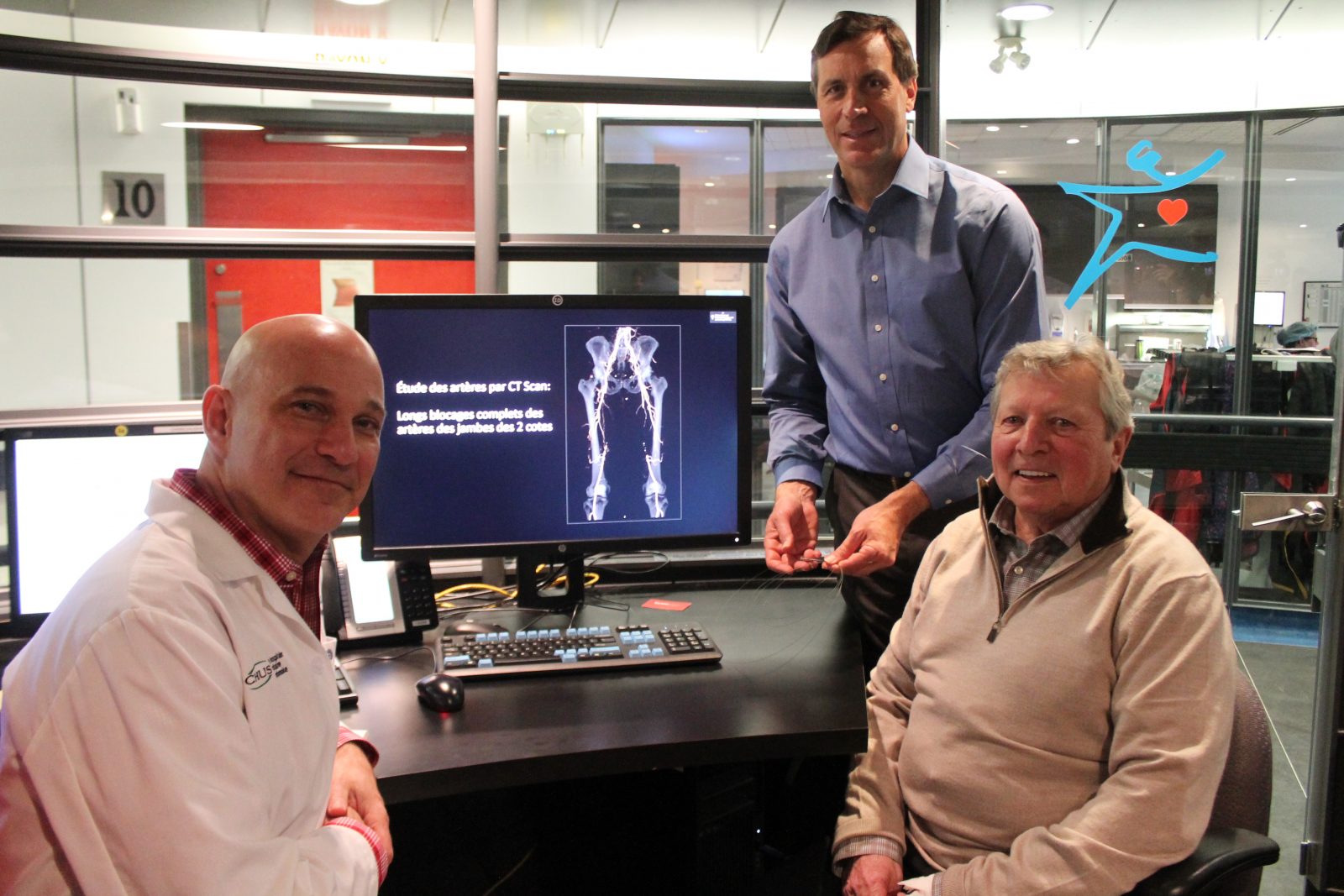Last December at the Fleurimont Hospital of the CIUSSS de L’Estrie- CHUS, Doctor Andrew Benko was able to completely clear two fully blocked arteries in the legs of 72 year old Jean-Claude Bergeron thanks to a technology developed at the University of Sherbrooke. According to the team behind the procedure this first-ever procedure of its kind in the world represents a significant step forward in the world of vascular surgery.
Speaking with members of the media in the surgical radiology department in Fleurimont on Thursday morning, Benko explained that the most common technique for clearing a blocked artery is what`s known as angioplasty; a procedure in which a wire is used to inflate a tiny balloon inside of a partially blocked blood vessel and widen the space available. The problem with this every-day technique, he added, is that traditional angioplasty wires cannot get through an artery that is completely blocked.
To the blind eye, SoundBite’s wire looks the same but it features a key difference.
“It is very similar to the guide wire we use every day, except that it is attached to a console that is emitting tiny shockwaves,” the doctor said. “It is a bit like a jackhammer; it’s microscopic, so we can’t see with the naked eye, but it can bypass blockages that would be impossible for standard guides.”
Though the idea of a jackhammer inside one’s blood vessels doesn’t sound particularly safe, Benko explained that the technology is actually no more likely to perforate an artery than existing angioplasty wires.
“Perforation when you’re trying to cross these kinds of lesions in the legs already happens fairly frequently,” the doctor said, explaining that the sound waves used by the new tool interact differently with soft tissues like a blood vessel wall than they do when they encounter something hard. “The jackhammer effect doesn’t do anything (to the blood vessel). It will drill through glass, but on a soft surface like a balloon, it won’t necessarily perforate; that’s the beauty of this kind of technology.”
“The problem of complete blockages is the final frontier of angioplasty,” said Professor Martin Brouillette who, along with his students Steven Dion and Louis-Philippe Riel, developed the SoundBite technology. Brouillette said that prior to this trial there was “no good technology” for getting past fully blocked arteries.
Comparing trying to break through a blockage with a traditional wire to “trying to drill through a brick wall with a cooked spaghetti noodle,” the engineer argued that the similarly non-invasive but much more dynamic SoundBite technology could have a wide range of possible applications both inside and outside of the cardiovascular system. To underline this idea, he pointed out that his team originally started work on the technology in 2004, as a way to break up kidney stones.
For Bergeron, who benefitted from the inaugural procedure, the results are beyond compare.
“For me it was like a miracle,” the former patient said. “In 72 hours it completely changed my life.”
Benko explained that Bergeron’c condition is referred to as peripheral vascular disease, a term which essentially refers to blood vessel blockages outside of the heart and brain. In the Sherbrooke man’s case, there was a 20 cm long blockage in major arteries in both of his legs, resulting in a man in the habit of walking eight kilometers every morning having a hard time going up stairs.
“It was very fast. The next day I went upstairs and my wife couldn’t believe it. 72 hours later i was jogging and going to the pool,” the 72 year-old said. “I’m 72 years old and I feel 60 again.”
According to Benko, Bergeron was the first of 30 patients who will benefit from the new technology as a part of this first human trial and a representative of the CHUS explained that a second, similarly successful procedure has already been carried out.
“The goal of the study is to demonstrate the effectiveness of SoundBite technology in improving technical success in surpassing complete blockages,” the doctor said, adding that if the technology proves its effectiveness, then it will be put into use in other ways as well. “We’re not going to intentionally choose the most complex anatomy. You need to start with something reasonable and then step up.”






